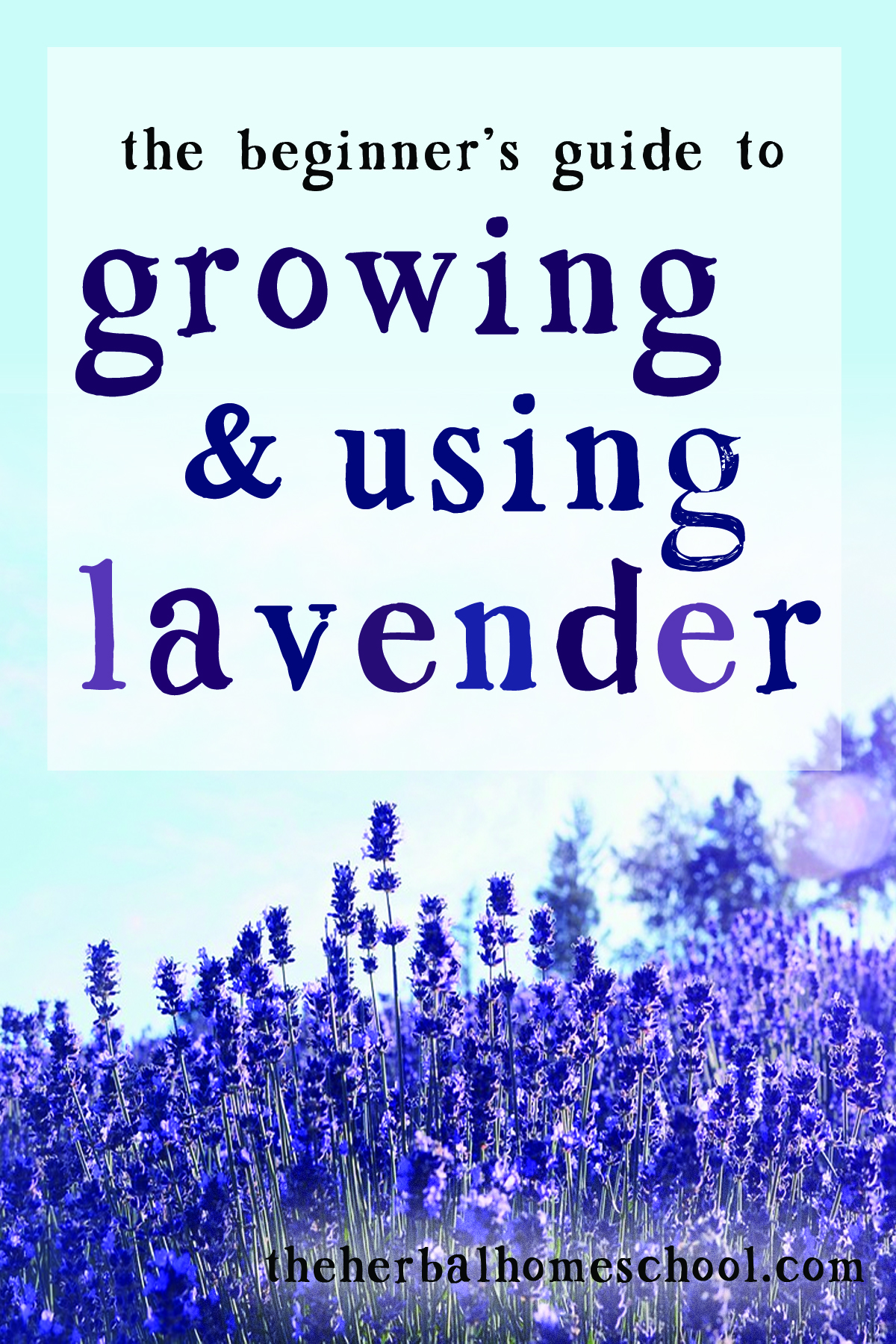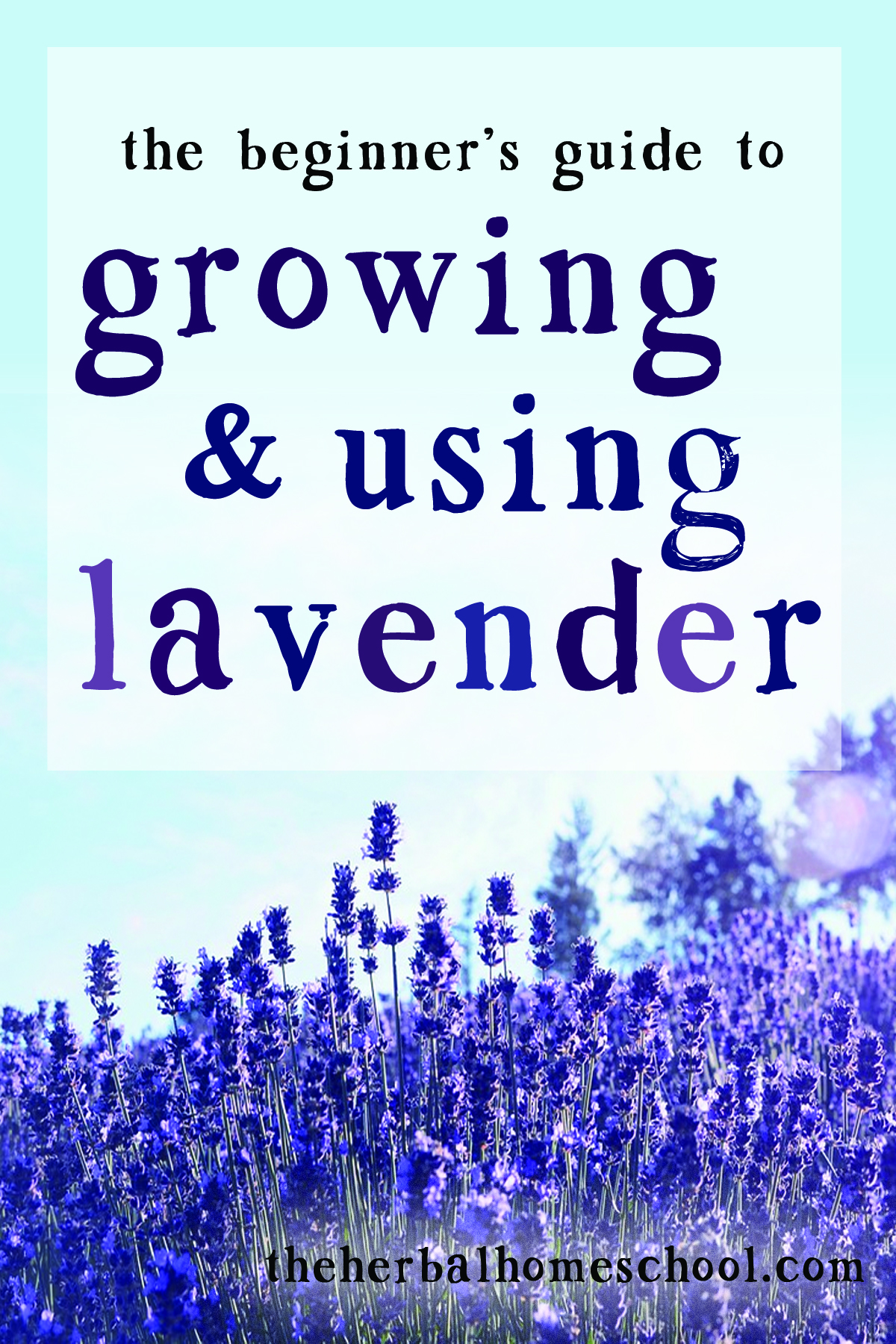Growing & Enjoying the Benefits of Lavender for Beginners

Lavender. Who doesn’t love a row of perfectly curved bushes surrounded by that glorious purple haze of flowers and the even more incredible aroma? I love the look of lavender and I love the scent.
While I did appreciate the glories of lavender, I really didn’t know how to use it. Looking on Pinterest, I’ve found a lot of great ideas to use lavender for decorating and making crafts and some about growing it, but not so much about actually using it medicinally. Side note, I may have to do another post of my favorite Pinterest ideas to keep me busy once I have more lavender to play with! There also seemed to be a lot, and I mean a LOT on using lavender essential oil, but not so much on using lavender right off your bush.
So while essential oils are great and many of the benefits of lavender can be reaped using the oil, I want to talk about lavender in general and share how to make a lavender infusion.
Benefits of Lavender
Lavender is aromatic, fights gas, is antibacterial and antiseptic, is an expectorant, and is considered an antispasmodic. The use of Lavender dates back to ancient Egypt and China. Lavender has been used to soothe headaches, toothaches, sore muscles, and coughs , ease anxiety, and eliminate digestive issues. (Doctor’s Health Press)
Lavender for Calming
Lavender is probably most well known for its calming, sedative properties. Studies have shown that breathing in the scent of lavender can promote deeper, more restorative sleep. In fact, I found one study done in a nursing home that found that residents slept just as long and even more soundly when they used lavender aromatherapy as when they used a sleep inducing drug. (Prescription for Herbal Healing) Wow, that is impressive. I know I have reached for the lavender at night when my first daughter was awake screaming for hours at a time and it seems to have helped. It either soothed her, soothed me, or just made me feel better because I was actually able to do something for her. I’m not sure & wouldn’t be able to tell scientifically, but when you’re a mama up in the middle of the night, you want results, not science.
Lavender for the Heart
Interestingly, Lavender is also good for the heart. It slows the cardiovascular system , which allows it to release constricted blood vessels. (Doctor’s Health Press) Lavender been shown to decrease blood pressure and improve blood circulation.
Lavender for the Lungs
Lavender has been used to treat respiratory issues including asthma. As an expectorant, it can be useful when you have a cold or a cough by clearing mucus. (dherbs.com) According to Prescription for Herbal Healing the American varieties of Lavender have been shown to reduce the severity of bronchitis symptoms by acting as an antihistamine. This is definitely one tidbit I’ll be keeping in mind as we enter cold & flu season this year.
Lavender for the Skin
This beautiful purple plant has many uses for the skin as well. Lavender water (just an infusion of lavender) spritzed on the face or irritated skin can be soothing. Because Lavender is an antimicrobial, Lavender oil can be used to treat acne. It balances out overactive sebum production, which the bacteria grows on. (Eden’s Garden)
Speaking of skin, you can also protect your skin with Lavender by using it as a mosquito repellent. Simply make a very potent Lavender infusion using 4 cups of water to 4 tbsp of Lavender.
Using Lavender in an Infusion
How do you make an infusion, which is really just another work for a stronger tea? Check out my post here for more details or read on for a brief summary.
Simply boil 4 cups of water then, once it reaches boiling, pull it off the heat. Add 2 tablespoons of Lavender, either loose or in a tea ball, and allow it to steep for at least 15 minutes. I would do much longer then this because one, I would forget about it and two, I would want it very strong. To learn more about storing your infusions, check out my blog post on the subject.
Growing Lavender at Home
Knowing the benefits of Lavender and how to use it is all well & fine, but you need to know how to grow it so you have some to work with! As I have learned more while writing this, I have realized that my poor little Lavender plant has not been taken care of all that well . . . Oh well, live and learn.
To begin with, Lavender is a perennial native to the Mediterranean region. The “four necessities” of Lavender are heat, air, drainage, and dryness.
It loves sun and warmth; Plant in full sun or grow in a south facing window indoors. Many people even suggest planting it against a stone wall/foundation to give your plant extra radiant heat.
The next three needs all have to do with dryness. Give your plant plenty of space so that it has sufficient air circulation and does not stay wet. I found suggestions to give it as much space around as it will grow tall; they seem to grow in a pretty ball shape when given ideal conditions.
The next need is drainage; again this is important so the roots do not stay wet and rot, especially in a pot. You can line the bottom of the hole or pot with gravel to increase drainage.
The last need IS dryness. I included this because you need to specifically make sure not to overwater your plant. Water only when the planting soil has dried out an inch deep. Also make sure, if growing in a pot, not to use a container that has a tray under it to retain water. I would water the plant in the sink or tub, let it drain, then return it to its window so it doesn’t drip everywhere.
Lavender plants like an alkaline soil. You can supplement your soil with oyster shells or add lime to increase alkalinity.
When to prune or harvest your lavender plant? To slow woody growth, I found suggestions to prune after flowering and before winter. Harvesting is pretty straight-forward cut it above the woody line and allow it to dry for two weeks before storing. You can bundle it & hang it, tie it into a wreath, or put it in a vase to do double duty as a decoration while it dries too!
If you live in the south and don’t experience very chilly winters, your Lavender plant should do great outside all year round. However, if you live in the north and have to deal with cold, wet winters, either growing your Lavender in a pot or potting it to bring it inside in the winter is probably your best option. I left my lavender outside last winter, but will be potting it to bring it inside this year. (Though it is 85 degrees today and doesn’t really feel like winter is coming yet!) As a side note for potting your lavender, find a pot around the same size as the root ball of your plant because they like to have their roots more tightly compacted in the pot.
So there you have it . . . a crash course on the benefits of lavender, how to make a lavender infusion, and how to grow lavender in your home garden. Please share if you found this helpful and click on the photo below to pin it to Pinterest!

